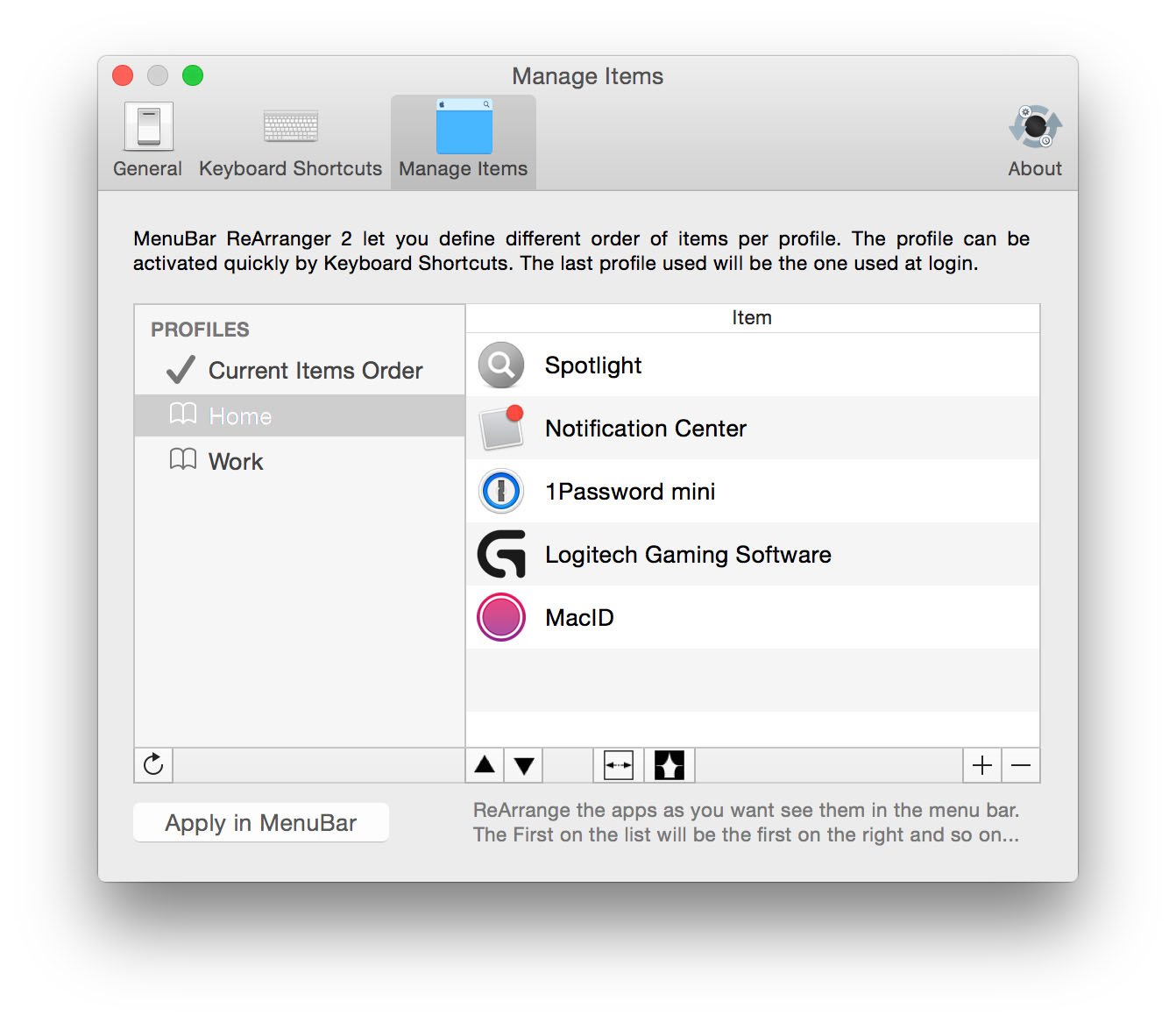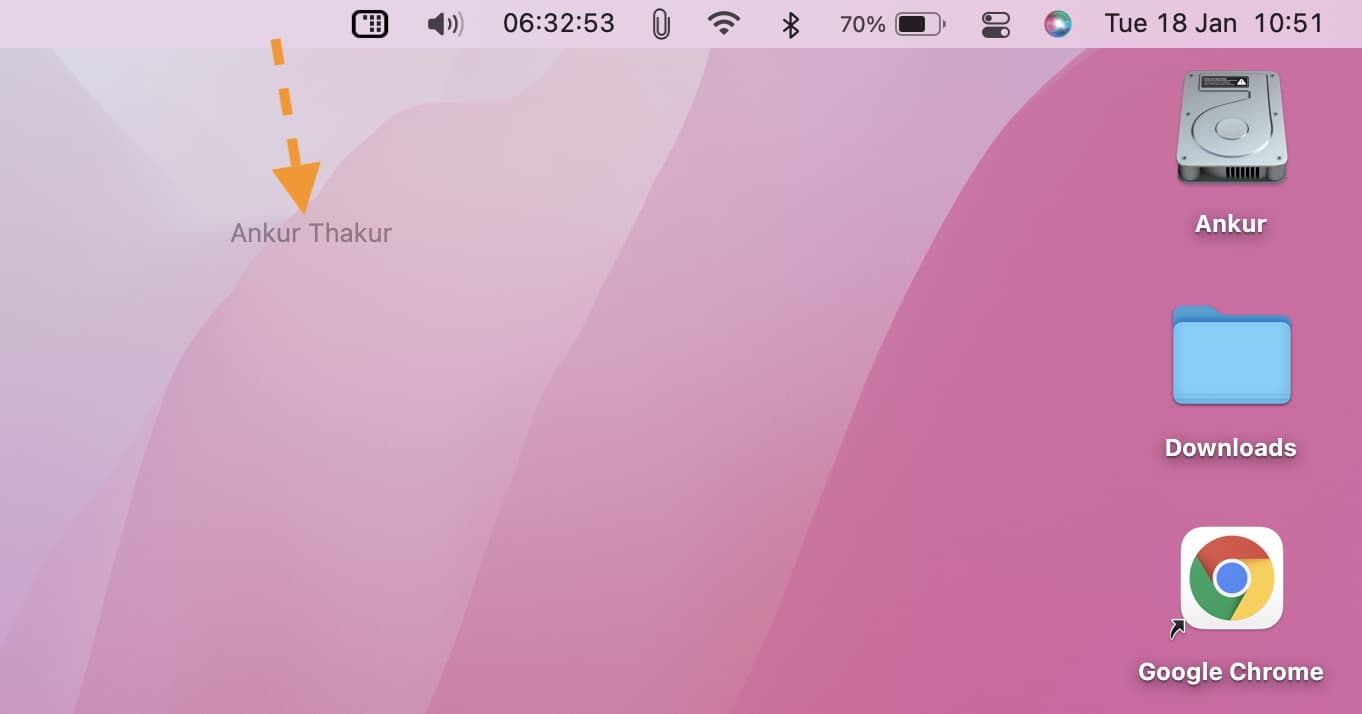

- HOW DO I REMOVE ITEMS FROM MENU BAR ON MAC FULL
- HOW DO I REMOVE ITEMS FROM MENU BAR ON MAC FREE
- HOW DO I REMOVE ITEMS FROM MENU BAR ON MAC MAC
Therefore, as well as removing Advanced Mac Tuneup, you should also eliminate other dubious applications/browser plug-ins. These apps are designed to deliver intrusive advertisements, cause unwanted redirects, and gather various information about your browsing activity. Advanced Mac Tuneup might have been deployed together with adware or browser hijackers. Therefore, developers typically "bundle" several potentially unwanted applications at once. We recommend that you to uninstall this application.Īs mentioned above, Advanced Mac Tuneup is distributed using the "bundling" method. There is a high probability that your computer is optimized and virus free.
HOW DO I REMOVE ITEMS FROM MENU BAR ON MAC FULL
There are dozens of fake system optimization tools that deliver false positives simply to trick users into purchasing so-called full versions.
HOW DO I REMOVE ITEMS FROM MENU BAR ON MAC FREE
After performing a system scan, users are presented with many potential infections/threats that must be eliminated immediately, however, since the free version of Advanced Mac Tuneup is incapable of doing this, users are encouraged to purchase the 'full version'.īe aware, however, that it is currently not confirmed if this application is reliable. One of the main Advanced Mac Tuneup features is malware removal. Therefore, Advanced Mac Tuneup is categorized as a potentially unwanted application (PUA). Initially, Advanced Mac Tuneup may seem legitimate, however, developers promote this app using a deceptive marketing method called "bundling", and thus it often infiltrates systems without permission. For example, while Dropbox offers access to settings from its app, there’s no way to pause or resume sync, or to see what’s syncing without the menu bar extra.Advanced Mac Tuneup is a dubious application that claims to enhance system performance by optimizing and removing all threats/malware. However, some apps don’t let you do this there would be no other way of accessing settings or features. Many of them can be removed, usually from a check box in the preferences or settings. For third-party items, you’ll need to check the apps that added the menu bar extras. (And you’ll be able to do this with third-party extras in macOS Sierra.)įor system items, just press Command and drag a menu bar extra away from the menu bar to remove it. You can change the position of any third-party menu bar extra by pressing the Command key, clicking it, and dragging it to a new location. Menu bar extras are in two groups: third-party items at the left, system items at the right. Next come system menu bar extras: Messages, Wi-Fi, Eject, Time Machine, Volume, Bluetooth, Input, User, Spotlight, Notification Center.

Here’s what’s in my menu bar, from left to right: Dropbox, Airfoil Satellite, TypeIt4Me, Bus圜al, BitTorrent Sync, HazeOver, Moom, f.lux, Evernote, Plex, then a group of status menu bar extras from iStat Menus. App menus get priority, and if you’re working with an app with lots of menus, some of your menu bar extras simply disappear. But if you have a laptop, you may find that not all of your menu bar extras display when an application you run has a lot of menus of its own. If you have a Mac with a large display, then you probably don’t worry about how many icons are in your menu bar, though they can give you sensory overload. Some offer similar features, such as access to oft-used functions, and others can provide status information. It’s not just OS X that puts menu extras at the top of your display third-party apps do as well. Or you can click the keyboard icon to change input methods, if you work with different keyboard layouts.


You can click the User icon to go to the login window, or to select a different user and switch to their account. For example, you can click the Wi-Fi icon to turn Wi-Fi on or off, or to select a Wi-Fi network. It displays “menu bar extras,” little icons that give you status information about your Mac, or that offer quick-access menus to certain settings.


 0 kommentar(er)
0 kommentar(er)
